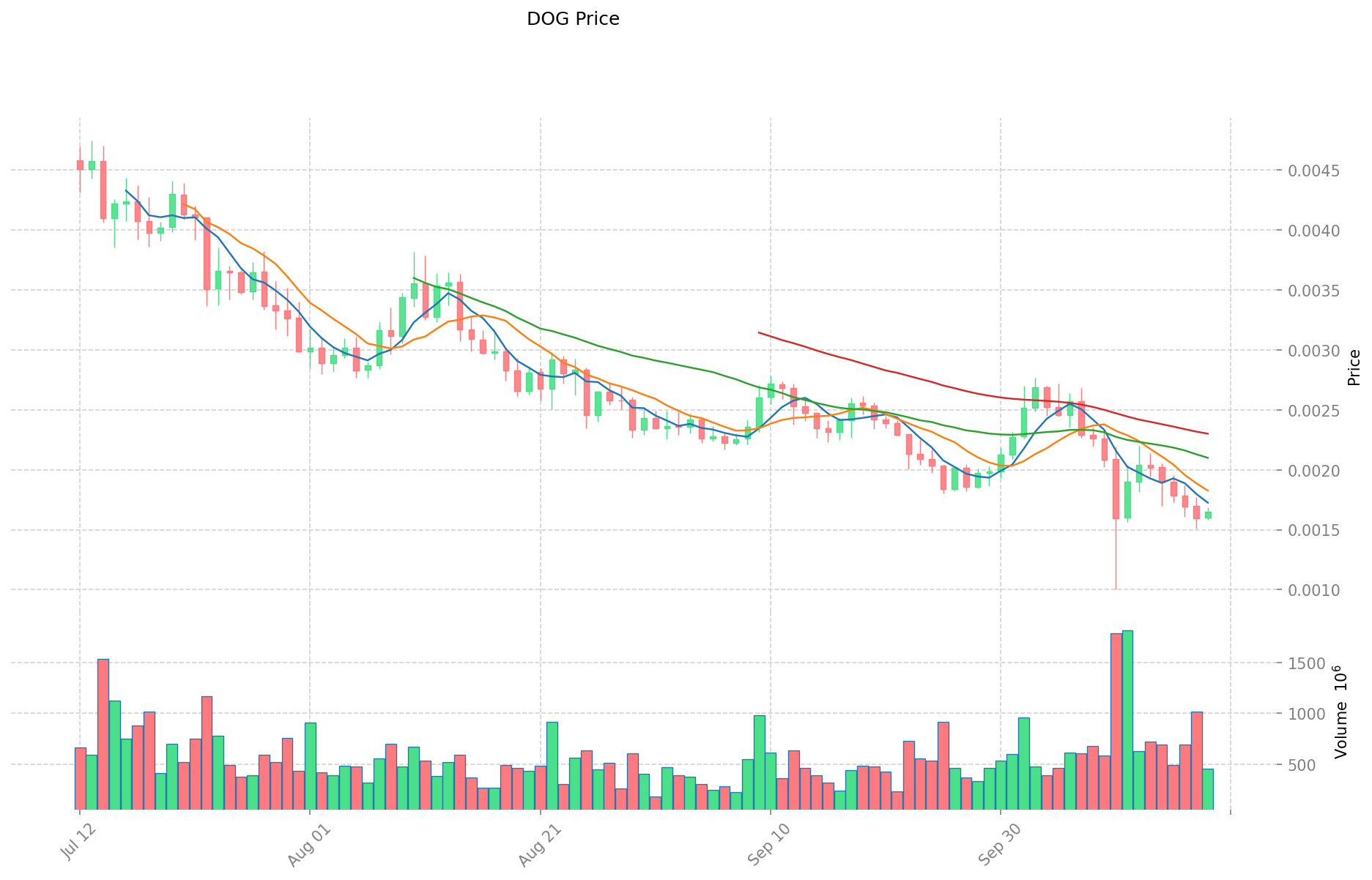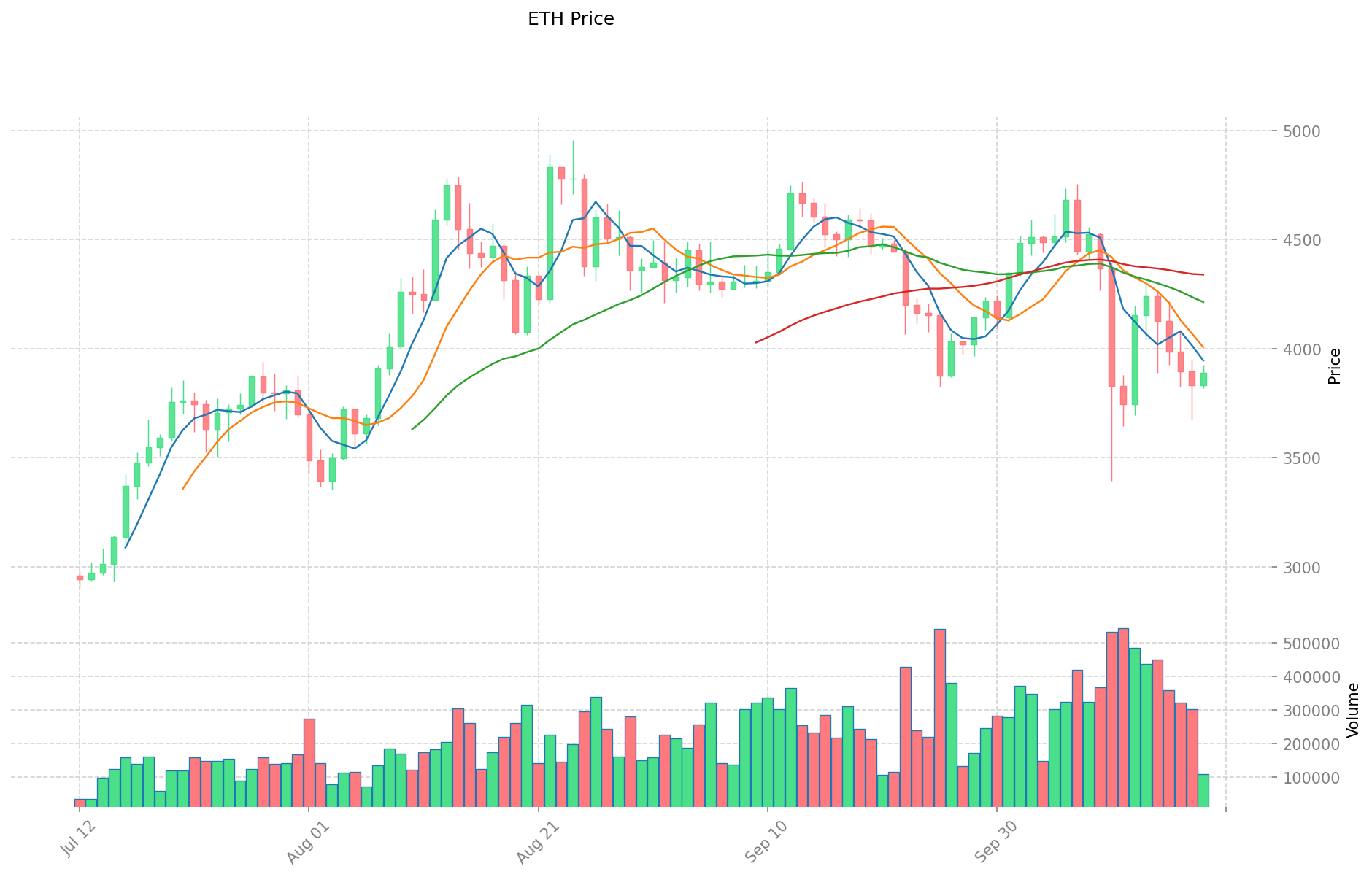DOG vs ETH: The Battle for Meme Coin Supremacy in the Crypto Market
Introduction: DOG vs ETH Investment Comparison
In the cryptocurrency market, DOG vs ETH comparison has always been a topic that investors cannot ignore. The two not only have significant differences in market cap ranking, application scenarios, and price performance, but also represent different positioning of crypto assets.
DOG (DOG): Since its launch, it has gained market recognition as a RUNES meme asset.
Ethereum (ETH): Since 2015, it has been hailed as a decentralized smart contract platform, and is one of the cryptocurrencies with the highest global trading volume and market capitalization.
This article will comprehensively analyze the investment value comparison between DOG and ETH, focusing on historical price trends, supply mechanisms, institutional adoption, technical ecosystems, and future predictions, and attempt to answer the question investors care about most:
"Which is the better buy right now?"
I. Price History Comparison and Current Market Status
DOG and ETH Historical Price Trends
- 2024: DOG reached its all-time high of $0.009999 on December 11, 2024.
- 2025: ETH hit its all-time high of $4,946.05 on August 25, 2025.
- Comparative Analysis: In the recent market cycle, DOG dropped from its high of $0.009999 to a low of $0.000478 on April 25, 2024, while ETH has shown more resilience, currently trading at $3,885.25.
Current Market Situation (2025-10-19)
- DOG current price: $0.001646
- ETH current price: $3,885.25
- 24-hour trading volume: DOG $729,678.05 vs ETH $419,558,871.38
- Market Sentiment Index (Fear & Greed Index): 23 (Extreme Fear)
Click to view real-time prices:
- View DOG current price Market Price
- View ETH current price Market Price


II. Core Factors Affecting Investment Value of DOG vs ETH
Supply Mechanism Comparison (Tokenomics)
- DOG: Fixed maximum supply of 10 billion tokens with fully distributed tokenomics. No new tokens are created, resulting in a deflationary model where supply can only decrease through token burning.
- ETH: Inflationary model with no maximum supply cap, but implements EIP-1559 burn mechanism that can make ETH deflationary during high network activity periods.
- 📌 Historical pattern: Fixed supply currencies like DOG tend to experience higher price volatility during bull markets, while ETH's evolving supply mechanism has helped stabilize long-term value through market cycles.
Institutional Adoption and Market Applications
- Institutional holdings: ETH is significantly more adopted by institutional investors, with over $20 billion in institutional ETH products compared to minimal institutional holdings of DOG.
- Enterprise adoption: ETH serves as the foundation for enterprise blockchain solutions across multiple industries, while DOG remains primarily a speculative asset with limited business applications.
- National policies: Regulatory bodies generally view ETH as a commodity/utility token, while meme coins like DOG face greater regulatory scrutiny in many jurisdictions.
Technical Development and Ecosystem Building
- ETH technical upgrades: Ongoing development of Ethereum's scaling solutions, including Layer 2 technologies and the transition to proof-of-stake, has dramatically improved transaction throughput and reduced environmental impact.
- DOG technical development: Limited technical development as it primarily exists as an ERC-20 token on Ethereum without its own unique technical roadmap.
- Ecosystem comparison: ETH supports thousands of dApps, DeFi protocols, NFT platforms, and smart contract applications with billions in TVL, while DOG has minimal native ecosystem beyond trading and speculation.
Macroeconomic Factors and Market Cycles
- Performance during inflation: ETH has demonstrated moderate inflation hedge characteristics due to its utility value, while DOG shows higher correlation to risk-on assets rather than inflation protection.
- Macroeconomic monetary policy: Both assets show sensitivity to interest rates and USD strength, but ETH tends to have more resilient fundamentals during bearish market conditions.
- Geopolitical factors: ETH benefits from growing global blockchain adoption and corporate interest, while DOG primarily responds to social media trends rather than geopolitical developments.
III. 2025-2030 Price Prediction: DOG vs ETH
Short-term Prediction (2025)
- DOG: Conservative $0.0010621 - $0.001634 | Optimistic $0.001634 - $0.00184642
- ETH: Conservative $3030.3936 - $3885.12 | Optimistic $3885.12 - $4895.2512
Mid-term Prediction (2027)
- DOG may enter a growth phase, with prices expected in the range of $0.000923007384 - $0.002696629416
- ETH may enter a bullish market, with prices expected in the range of $2642.01369408 - $6403.52471616
- Key drivers: Institutional capital inflow, ETF, ecosystem development
Long-term Prediction (2030)
- DOG: Base scenario $0.002673959395445 - $0.003004448758927 | Optimistic scenario $0.003004448758927 - $0.003995916849373
- ETH: Base scenario $6957.24153415422264 - $7172.413952736312 | Optimistic scenario $7172.413952736312 - $7961.37948753730632
Disclaimer: The above predictions are based on historical data and market analysis. Cryptocurrency markets are highly volatile and subject to rapid changes. These forecasts should not be considered as financial advice. Always conduct your own research before making investment decisions.
DOG:
| 年份 | 预测最高价 | 预测平均价格 | 预测最低价 | 涨跌幅 |
|---|---|---|---|---|
| 2025 | 0.00184642 | 0.001634 | 0.0010621 | 0 |
| 2026 | 0.0018794268 | 0.00174021 | 0.001566189 | 5 |
| 2027 | 0.002696629416 | 0.0018098184 | 0.000923007384 | 9 |
| 2028 | 0.00306438451488 | 0.002253223908 | 0.00148712777928 | 36 |
| 2029 | 0.003350093306414 | 0.00265880421144 | 0.001488930358406 | 61 |
| 2030 | 0.003995916849373 | 0.003004448758927 | 0.002673959395445 | 82 |
ETH:
| 年份 | 预测最高价 | 预测平均价格 | 预测最低价 | 涨跌幅 |
|---|---|---|---|---|
| 2025 | 4895.2512 | 3885.12 | 3030.3936 | 0 |
| 2026 | 4565.793024 | 4390.1856 | 2853.62064 | 12 |
| 2027 | 6403.52471616 | 4477.989312 | 2642.01369408 | 15 |
| 2028 | 6365.6857064736 | 5440.75701408 | 3754.1223397152 | 40 |
| 2029 | 8441.606545195824 | 5903.2213602768 | 5430.963651454656 | 51 |
| 2030 | 7961.37948753730632 | 7172.413952736312 | 6957.24153415422264 | 84 |
IV. Investment Strategy Comparison: DOG vs ETH
Long-term vs Short-term Investment Strategy
- DOG: Suitable for investors focused on speculative meme-driven assets and short-term trading opportunities
- ETH: Suitable for investors seeking long-term growth, ecosystem potential, and technological advancement
Risk Management and Asset Allocation
- Conservative investors: DOG: 5% vs ETH: 95%
- Aggressive investors: DOG: 20% vs ETH: 80%
- Hedging tools: Stablecoin allocation, options, cross-currency portfolio
V. Potential Risk Comparison
Market Risk
- DOG: High volatility, susceptible to market sentiment and social media trends
- ETH: Moderate volatility, influenced by broader crypto market trends and macroeconomic factors
Technical Risk
- DOG: Limited technical development, reliance on Ethereum network
- ETH: Scalability challenges, network congestion during high activity periods
Regulatory Risk
- Global regulatory policies have different impacts on both assets, with meme coins like DOG facing potentially higher scrutiny
VI. Conclusion: Which Is the Better Buy?
📌 Investment Value Summary:
- DOG advantages: High potential for short-term gains, strong community engagement
- ETH advantages: Established ecosystem, ongoing technical development, institutional adoption
✅ Investment Advice:
- Novice investors: Consider allocating a small portion to DOG for exposure to meme coin market, with a larger allocation to ETH for stability
- Experienced investors: Implement a dynamic allocation strategy, adjusting DOG/ETH ratio based on market cycles and risk tolerance
- Institutional investors: Focus primarily on ETH for its established market position and ongoing development, with minimal or no allocation to DOG
⚠️ Risk Warning: Cryptocurrency markets are highly volatile. This article does not constitute investment advice. None
VII. FAQ
Q1: What are the main differences between DOG and ETH in terms of investment potential? A: DOG is a meme-driven asset with high short-term volatility and speculative potential, while ETH is an established blockchain platform with a vast ecosystem, ongoing technical development, and greater institutional adoption.
Q2: How do the supply mechanisms of DOG and ETH differ? A: DOG has a fixed maximum supply of 10 billion tokens, creating a deflationary model. ETH has no maximum supply cap but implements a burn mechanism that can make it deflationary during high network activity periods.
Q3: Which asset is more suitable for long-term investment? A: ETH is generally considered more suitable for long-term investment due to its established ecosystem, ongoing technical development, and broader adoption across various industries.
Q4: What are the key risks associated with investing in DOG and ETH? A: DOG faces high volatility and regulatory risks as a meme coin. ETH's main risks include scalability challenges and potential regulatory changes affecting the broader cryptocurrency market.
Q5: How do institutional investors view DOG and ETH? A: Institutional investors have shown significant interest in ETH, with over $20 billion in institutional ETH products. DOG has minimal institutional holdings and is primarily viewed as a speculative asset.
Q6: What factors should be considered when allocating investments between DOG and ETH? A: Investors should consider their risk tolerance, investment horizon, market trends, regulatory environment, and the ongoing development of each asset's ecosystem when allocating between DOG and ETH.
Q7: How might future technical developments impact the value of DOG and ETH? A: ETH's ongoing technical upgrades, such as scaling solutions and the transition to proof-of-stake, could significantly impact its value. DOG, as an ERC-20 token, may indirectly benefit from Ethereum's improvements but has limited independent technical development.
Share
Content